如果虛擬實境1不只是一種「技術」,而是一種具有「形塑世界」能力的「媒介」,那麼它形塑的是什麼樣的世界?
斯拉維.紀傑克(Slavoj Žižek)談及政治主體化時,他注意到賈克.洪席耶(Jacaues Rancière )為了處理後現代時期大眾媒體興起而導致的民主危機,所以從感知層面上補充過往對於政治的討論,特別聚焦在尚.布希亞(Jean Baudrillard)「擬象」(simulacrum)理論的問題。洪席耶區分了柏拉圖式的原初政治(arche-politics)、亞里士多德式與霍布斯(Thomas Hobbes)式的超政治(para-politics)與社會科學式的後設政治(meta-politics)三種政治類型,並認為大眾媒體與(意見之擬象的)科學所推動「後民主」在「可見性的地位–世界的圖像–政治活動的形式」三元關係上,擬象統治意味著「主權人民–實證人口–科學知識的人口」三者的統一,這以擬象取代了現實,並取消了「人民」,當然也一併取消了「民主」,對洪席耶來說,這是「擬象的統治」。2紀傑克認為在這三種「對政治性時刻的否定」的類型之外,還必須加上極端政治(ultra-politics)這種用以說明法西斯主義以「(階級)戰爭」這種將衝突導向極端、透過直接軍事化來取消政治的類型。為了將共產主義與法西斯主義兩種不同的極權主義區分開來,除了提出「法西斯主義是極端政治,而共產主義是後設政治」這個命題之外,紀傑克還特別延伸了洪席耶對於感知、表象(appearance)與擬象關係的討論,認為史達林主義式的共產主義式極權主義之所以會發生,就在於後設政治中「平等–自由的表象(形式民主)」與「(經濟文化及其餘各種差異的)社會現實」間的鴻溝,在這裡,「表象」恰恰不是「純然的表象」,而是具有效力、可以重新構連社會經濟過程,並使其政治化的「形式」。換句話說,由於「現實」並未跟上「形式」,但形式具有政治效力,所以十月革命雖然發生了,但「現實上,什麼事都沒有發生」,因為十月革命讓整個社會實體保持完整不變。對紀傑克來說,因為共產主義與必然走向極權主義的右翼法西斯式極端政治不同,所以在面對大眾媒體時代擬象的擴散所導致的政治問題時,共產主義仍保有從「後設政治」角度來對抗後現代大眾媒體式「後政治」(post-politics)的可能性。3
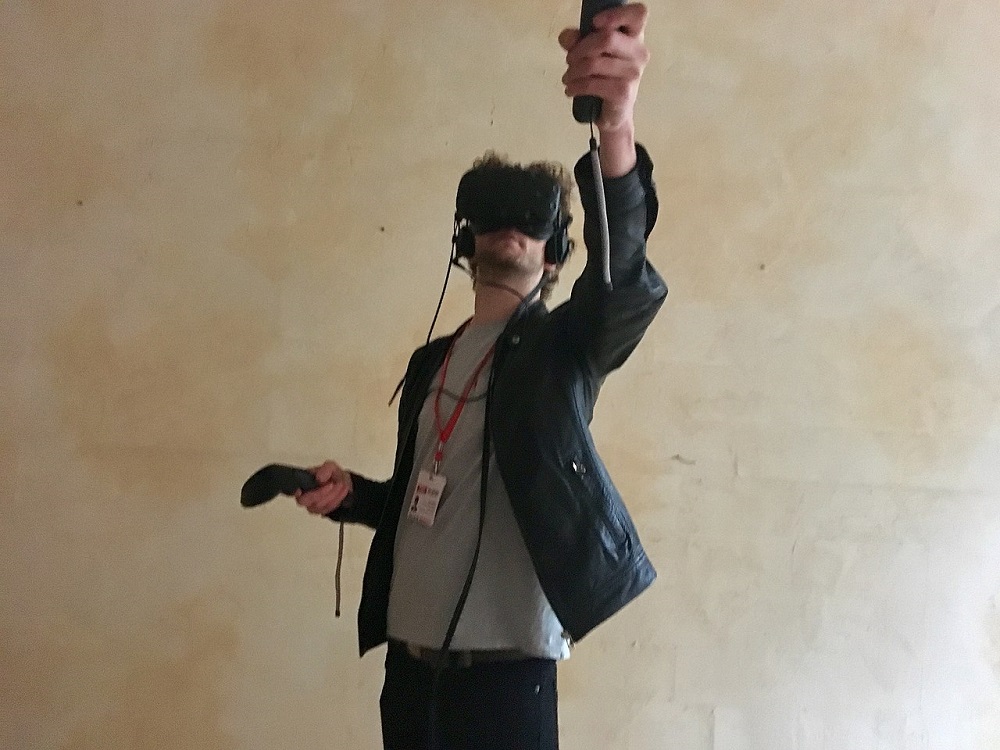 如果虛擬實境不只是一種「技術」,而是一種具有「形塑世界」能力的「媒介」,那麼它形塑的是什麼樣的世界?圖/Wikimedia Commons、Douwe Dijkstra攝影
如果虛擬實境不只是一種「技術」,而是一種具有「形塑世界」能力的「媒介」,那麼它形塑的是什麼樣的世界?圖/Wikimedia Commons、Douwe Dijkstra攝影
對我們想要展開的虛擬實境討論來說,之所以需要繞這麼一大段路,就在於洪席耶與紀傑克都清楚地將「政治」關聯上「世界圖像」與「可見性」問題,並在這樣的基礎上,認為「擬象」是個政治與政治哲學理論必須面對的時代性問題。尤有甚者,紀傑克之所以能將共產主義式極權主義與法西斯主義式極權主義區分開來,就在於他將現象、表象、擬象、真實(the Real)、現實……等這些馬丁.塞爾(Martin Seel)所謂的,與感知及媒介相關的、「意向地被給予物的一些模態」4的區分,清楚地以「現實/擬象」與「真實/表象」兩組對立性的區分為變項,將表象區分成幻覺(illusion)、符象虛構(symbolic fiction)、跡象(sign)、根本幻見(fundamental fantasy)這四個不同的層次。藉此,他認為,大眾媒體時代的政治情境並不如布希亞、保羅.維希留(Paul Virilio)或基阿尼.瓦蒂默(Gianni Vattimo)這些思想家所歡慶的那樣,透過擬象取消了真實,因而得以擺脫長久以來西方形上學的束縛。對紀傑克來說,擬象是「網路空間」(cyberspace)也是「虛擬現實」,虛擬現實是現實與擬象兩者的重合,因此虛擬現實具有「現實感」,但無法製造「真實」,可是在符象虛構層次被取消的政治面,會在真實層中回返。
對我們來說,不管是洪席耶還是紀傑克,當他們將「擬象」與「民主」放在同一個理論位置上,來考慮擬象對於民主的威脅時,擬象就以其「(現象學意義上的)現象」概念,成為「民主」的功能等同項(functional equivalence)。換句話說,民主作為一種訴諸人民的主體性政治,必須具有現象層面上的可見形式;反過來說也必須成立:現象層面上的不同的「意向地被給予物的一些模態」也具有主體性政治的效力。
紀傑克除了承接洪席耶「主體性政治」與「現象學意義上的現象」兩者間共構的設想之外,他還認為這樣的共構當具有技術層面上的框架條件,所以「虛擬現實」與「網路空間」都被他用來指稱「擬象」。在這個「網路空間」被快速提過的句子裡,5 紀傑克所談的「虛擬現實」與我們現在所談的「虛擬實境」,在技術與現象兩個層面上都不相同。紀傑克將「虛擬現實」與「網路空間」看成是同一件事,換句話說,虛擬現實是現象層面的模式,而網路空間是技術層面的框架,這全然不同於現在在談「虛擬實境」時,所指的主要是由頭盔顯示器(Head Mount Display, HMD)所創造的視覺效果與現象。現在意義下的「虛擬實境」在技術層面上主要由「投影螢幕–(測試頭部旋轉角度或眼球動勢的)感測器–(收集感測資料以計算螢幕顯示內容的)運算元件」三個部分所構成,強調沉浸(immersion)與互動(interaction)。6 簡言之,「虛擬實境」是相關技術上的統稱,或許「人造現實」(artificial reality)是較為貼近這種虛擬實境技術在現象層面上的模式稱呼。7
透過揭示紀傑克所言之「虛擬現實」與現在常用的「虛擬實境」兩者間的不同,我們得以在技術框架變遷的前提下,區分出兩種不同的「世界」模式:「擬象」的世界模式與「沉浸–互動」模式。這兩種模式之間最大的差異,首先就在於「世界」性質的不同,以西皮爾.克萊默爾(Sybille Krämer)的用法來說,就是:「世界」到底是作為「約定的符號」(konventionelle Zeichen)還是作為「痕跡」(Spur)的差別。「約定的符號」所指的是在意義中全然被意向的、被約定化的符號,簡言之,世界作為約定的符號是完整地被意向地符號化的,在這種「世界」之中的所有部分都具有「意義」。不管是洪席耶還是紀傑克(甚至是他們所暗自援引的馬丁.海德格〔Martin Heidegger〕)所提及的「世界圖像」;而作為「痕跡」的世界,指的則是這個世界中有著「沒有被符號使用者所意向到、亦完全不受符號使用者所控制」的「過剩物」(das Überschuss)。8
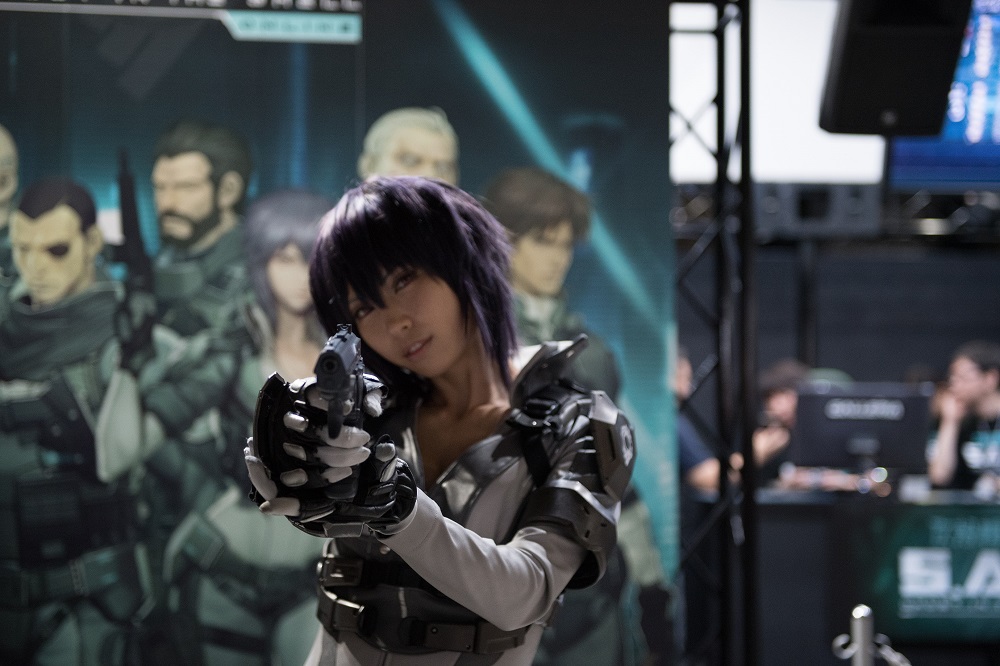 《攻殼機動隊》中,草薙素子為了營救迷失在電子腦當中的同伴,戴上VR式的頭盔進入網路空間之中。圖/Wikimedia Commons、Koichiro Ohba攝影
《攻殼機動隊》中,草薙素子為了營救迷失在電子腦當中的同伴,戴上VR式的頭盔進入網路空間之中。圖/Wikimedia Commons、Koichiro Ohba攝影
紀傑克提到的「虛擬現實」是「約定符號式的世界」,指涉的是「網路空間『整體』」,要能指涉這個空間整體,必須有一個在這整體「之外」的「觀察者」,這個觀察者的位置,位於「離線」(off-line)的現實之中。在這個離線之觀察者視域範圍內的網路空間整體,都已被符號化,不同部分彼此之間都具有互文的可能性。紀傑克這種虛擬現實是在數位運算時代下電影院式的構想。《攻殼機動隊》十二話中,草薙素子為了營救迷失在電子腦當中的同伴,戴上VR式的頭盔進入網路空間之中,後來卻發現頭盔的擁有者是個電影導演,在電子腦中蓋了一座只放自己作品的電影院,電影情節入勝讓所有進入這個電子腦的人都流連忘返,樂不思蜀。這種數位時代以電影來表象的「虛擬現實」,處於個人電腦(PC)以其數位擬象能力,創造不同於離線的線上(on-line)擬象世界的時代。陶亞倫《時間全景》以降的虛擬實境系列作品,多是這種「虛擬現實」的理論思維下的作品。甚至在思考如何重現與典藏過往《終結歷史之光》這件空間裝置作品的《穿越光牆:Archive or Alive》的虛擬實境作品訪談中,提到VR對他而言才最完整實現了空間裝置版尚無能達及的觀念性。9 從《留白》這件單純的空間裝置作品到虛擬實境作品,我們能夠明顯地看到陶亞倫對於空間與整體世界的意義性理解,是符號化的、是充盈的,整體性地具有意義的。只有在這樣的理解下,才能解釋為什麼《留白》中無其他物,且被強光抹去空間物質性特質的裝置空間是允許觀眾自由走動的,因為無一不在空的空間所能提供的「意義」中;相對於此,《時間全景》以降VR系列作品中的觀眾則不得不被束縛在動力機械性的觀景台上,因為現在的「人造現實」仍然過於素樸,隨時都有暴露其世界「不夠現實」的危險,但是最有可能是由於盈滿的「(符號性)世界」不能由於觀察的介入而產生敘事上的裂縫,所以只好像電影院一般,將觀眾限制在特定的觀看位置上。
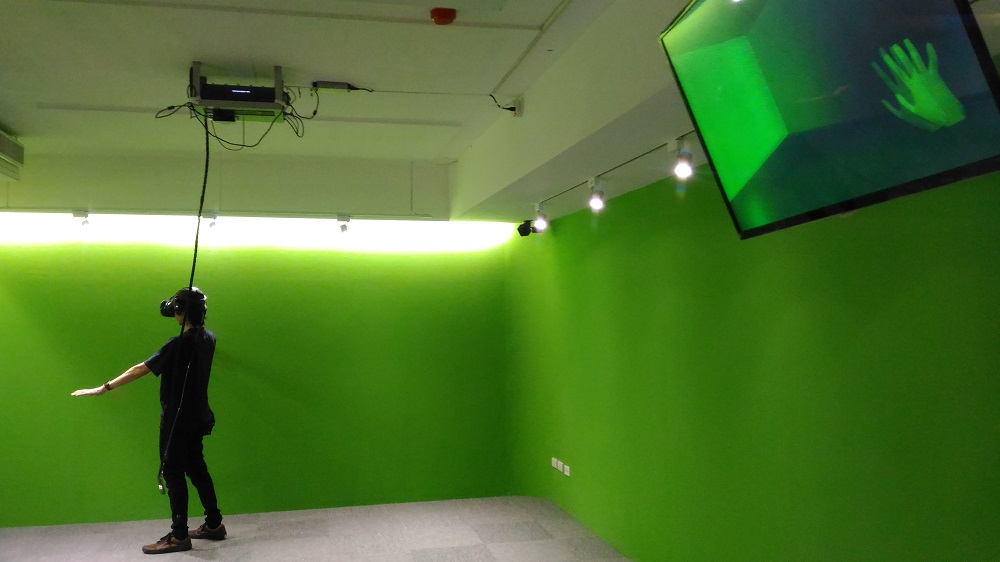
不過,縱使是「約定符號的世界」,也不是只有一種世界。從模態理論出發,伊蕾娜.愛斯波西托(Elena Esposito)認為,我們應當將「虛構」(Fiktion)與「虛擬」區分開來,亦即區別「真實的現實」(reale Realität)與「可能的現實」(mögliche Realität)兩種不同的現實。「虛構」在意的是「真/假」的問題,而「虛擬」則下錨在「實現的(aktualisiert)可能性/潛在的(latent)可能性」的問題基礎上。愛斯波西托指出,人們往往用「擬象性現實」(simulierte Realität)的方式來談「可能性世界」(mögliche Welt),但是這樣做就混淆了虛構與虛擬兩者。擬象性現實是「虛構對象」(fiktionale Objekt)的模式化,換句話說,擬象現實再生產了「被虛構之對象」的某些特質,所以牽涉到的是「符號」與「被指涉物」兩者間的關係;而虛擬實境是將「具體的思維對象」當作「具替代性的(alternativ)現實」生產出來,換句話說,虛擬實境不是「假的現實」,而是「真的虛擬對象」,在這個意義上,「真實的現實」的相關問題,並不主要在「虛擬實境」的意義射程範圍之內。
愛斯波西托指出,「虛構」與「真實的現實」兩者間的對位關係,是(西方)歷史發展的產物,她從中心視角的發現對於空間感知的影響、小說敘事的時間性對於時間經驗的改造、以及「作者」角色的出現三個層面的變化,說明了歐陸自16與17世紀以降「自我指涉/異己指涉(Fremdreferenz)」兩者相互分離的經驗構造是具有歷史特殊性的,「虛構」建立在不讓作者在敘事中出現的中心視角中,而這被認定不屬於實在論(Realismus)的、專屬於虛構的可能性空間。不同於虛構與真實的現實關係,虛擬則與可能性有關。西方古代的可能性概念不僅指涉想像出來的對象,也指涉神秘的對象。這些對象位於與人類可感知世界共存的平行世界之中,但是不同平行世界間能夠交流與混合。如前所述,這樣的可能性世界在現代時期被縮限成虛構的世界,主導媒介為印刷術的現代時期,把古典時期對於人類記憶力的要求交付給書籍,批判、幽默這些現代時期才增值的人類能力恰恰是為了拉近「異己指涉(外在化的記憶內容)」與「自我指涉(思考)」的距離,而這與越來越遠、非互動性的遠距溝通一同發生。10一個個體多個虛構視角的共同在場,在現代時期是無法被接受的,因為這會導致「作者」最少被迫出現在其中一個虛構的世界中;與此同時,諸多觀察者所共同看到的,也只能是那個唯一的、對所有觀察者都一樣的世界。觀察者的多樣性與多個可能性世界共存消失了。然而,在「虛擬實境」技術已然實現的現在,藉由「沈浸–互動」技術的幫助,多個平行世界得以同時出現,因而在「虛擬實境」中,世界之於觀察者的關係,從「再現」變成「呈現」(präsentieren),而觀察者與平行世界的關係,不再是「虛構性現實」(fictional reality),而是「虛構就是現實」(reality of fiction)。11 我們不只擁有「現實的可能性」,還增加了「可能的可能性」可以選擇。就此而言,「選擇」(selection)就成了「觀察者」介入與干預「觀察者自身與(可能性)世界關係」的主要模式。12
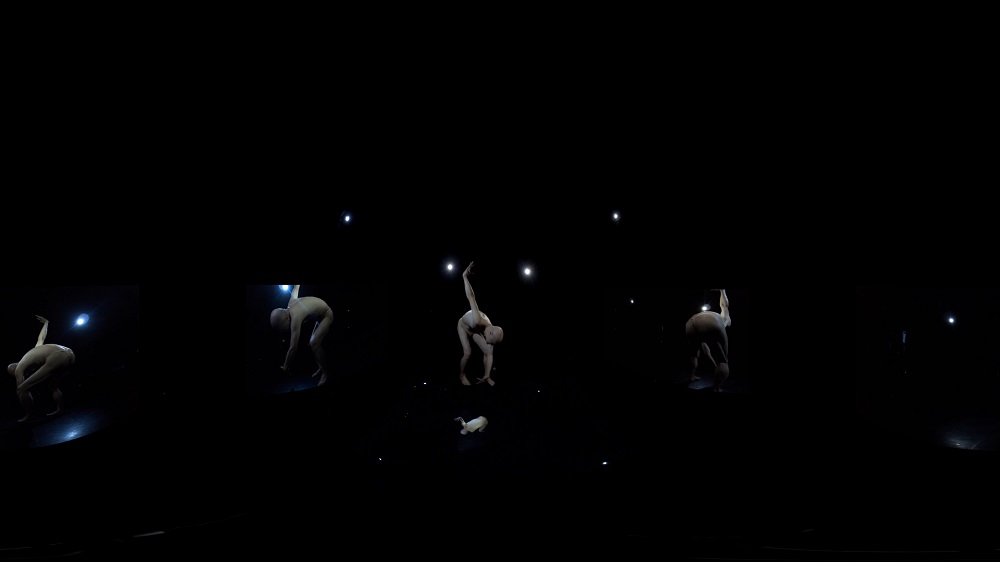 數位藝術基金會《Archive or Alive:劉守曜獨舞數位典藏》作品的VR選單。圖 © 數位藝術基金會
數位藝術基金會《Archive or Alive:劉守曜獨舞數位典藏》作品的VR選單。圖 © 數位藝術基金會
迄今「虛擬實境」的影像敘事模式之所以與電玩有這麼大的類似性,13就在以選單來表現的「選擇」形式上,數位藝術基金會《Archive or Alive:劉守曜獨舞數位典藏》中不同的觀賞角度,蘿瑞.安德森(Laurie Anderson)與黃心健的《沙中房間》不同房間的選擇,都立基於「可能性世界」的擴展。不過,除了選單模式之外,陳芯宜《留給未來的殘影》這部虛擬實境電影中,當觀者同時面對同一個舞者在不同走道中一同出現時,不管是追隨哪個走道中的舞者,還是停留在原地四處張望,觀眾都清楚地意識到自己擁有超過一種的可能性,並且選擇其中一種可能性而放棄其他。當然,在敘事的推進上,導演也有意識地擴張或縮小可能世界的大小,有的時候遮住觀察者背後的可能性世界,讓觀眾只有眼睛視角範圍內的選擇,有的時候提供360度的可能性世界,引誘觀眾趨前或轉身,甚至讓影像清晰到戴頭盔顯示器的觀眾不自覺地伸手出去,或者覺得聞到了舞者劃起火柴的味道。這些在心理或生理上已然相信的現實,不是虛構的,而是虛擬的。
除了前述兩種從「約定符號的世界」來創作的虛擬實境作品之外,還有一些作品,他們處理VR敘事的方式,是認為虛擬實境技術所留下的是「(世界的)痕跡」。不同於「符號」,「痕跡」是前論述(prädiskursiv)、前語意學地發生作用的。痕跡不「說」些什麼,它只「顯示」些什麼,但是這種顯示,也是附帶且無意識地形成的,痕跡總是過去已經發生之物、現在已不在場之物的痕跡。所以當我們試圖以某種技術為觀眾創造痕跡時,我們所使用的技術已經限制了傳遞資訊的形式,這種技術為「資訊」或「意義」設下的限制,即是「(未被意向到的、意義的)過剩物」。克萊默爾認為,我們必須以「媒介」的方式看待技術,將技術視為機具(Apparat),而非海德格意義下的「工具」(Werkzeug)。這種進路涉及我們理解「行為」(Handlung)意義的方式,以及「意義的過剩物」之所以會「在真實層中重返」的原因。
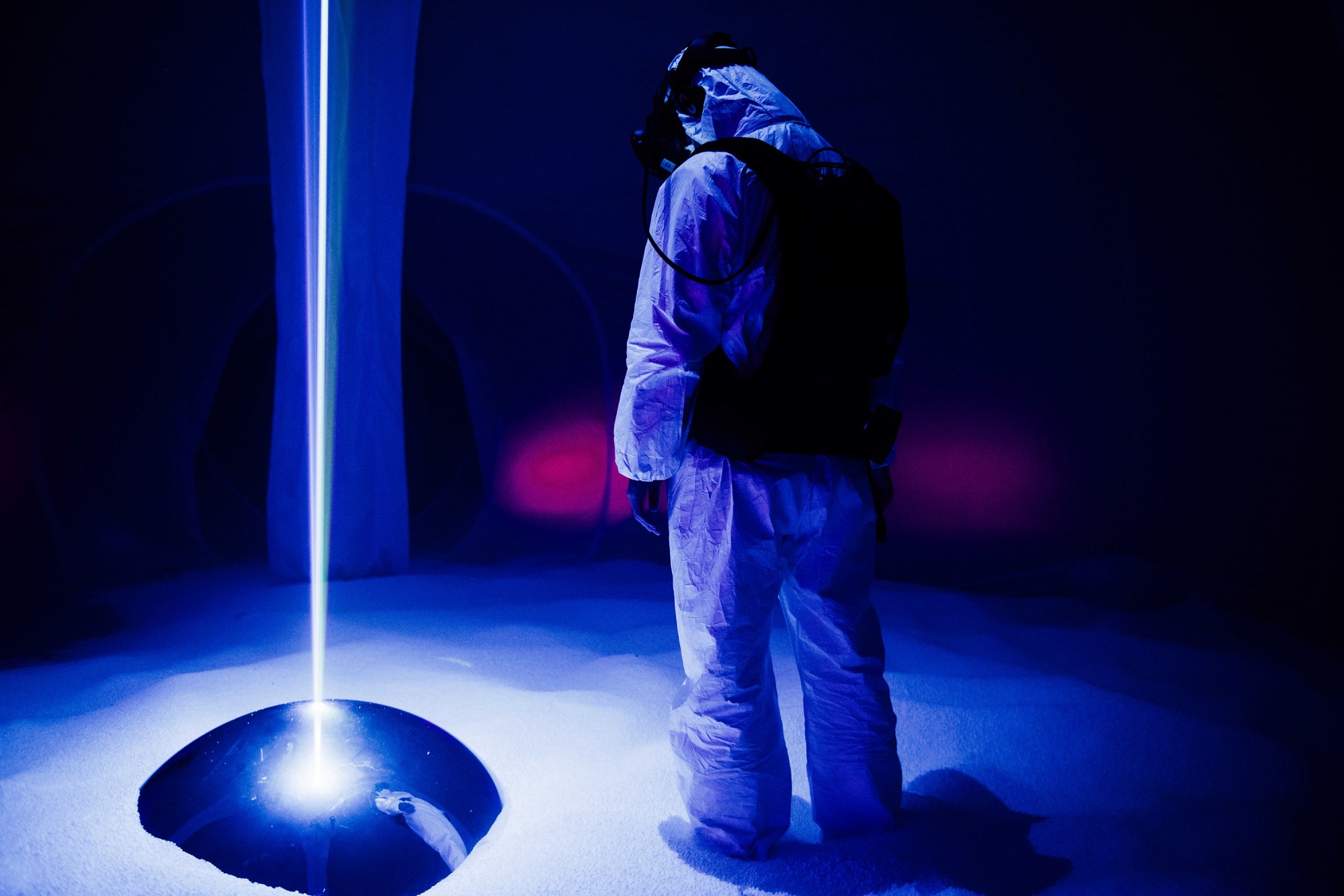 在涅所開發的作品《Render Ghost》,觀眾被要求先戴著虛擬實境的裝備進入藝術家們用動畫後製出來的虛擬空間中。圖/陳藝堂攝影、涅所開發NAXS Corp提供
在涅所開發的作品《Render Ghost》,觀眾被要求先戴著虛擬實境的裝備進入藝術家們用動畫後製出來的虛擬空間中。圖/陳藝堂攝影、涅所開發NAXS Corp提供
在涅所開發的《Render Ghost》中,觀眾被要求先戴著虛擬實境的裝備進入藝術家們用動畫後製出來的虛擬空間中。頭盔拿下之後,觀眾會發現自己並未全然回到日常生活,而是還身處於一個與虛擬空間氣氛相近的「真實」世界,漫天飛舞的細碎保利龍球創造了另一個迷幻的世界。這種「虛擬實境–過渡世界–真實的日常世界」三層的世界結構,透過多安排一個「過渡世界」,讓觀眾的行為不僅發生在虛擬實境當中,也發生在過渡世界之中:「行為」穿透了符號層。這讓觀眾的行為不只具有符號性的意義,還得以發生在「媒介」中(雖然無法被清楚地自己看見)。在這個階段,符號性的行為才算真正的完成,技術所造成的意義過剩不會外溢到真實的日常世界並造成真實與虛擬的誤認。
本文區分了「虛擬現實」、「虛擬實境」與「現實的過渡」三種VR作品的模態。「虛擬現實」及「虛擬實境」都位於「約定符號的世界」中,而「虛擬現實」與「現實的過渡」兩者都位於「真實之現實」這種世界中。在面對「意義的過剩」問題時,「虛擬實境」模態將過剩移置到「可能性世界」中,並認為二階觀察者發展出「選擇」來解決這個問題;相對於此,「現實的過渡」在虛擬實境與真實的日常世界之間增加了「過渡世界」來解決虛擬實境技術所導致的意義過剩。這三種模態,大致是臺灣近期的VR影像創作領域內,可辨識出的主要敘事與裝置模式。